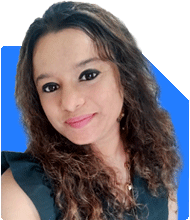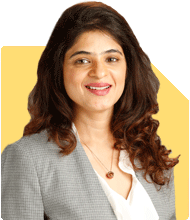Ramalingam Kalirajan |8457 Answers |Ask -Follow
Mutual Funds, Financial Planning Expert - Answered on Jul 11, 2024
He has an MBA in finance from the University of Madras and is a certified financial planner.
He is the director and chief financial planner at Holistic Investment, a Chennai-based firm that offers financial planning and wealth management advice.... more

I am 30 year old , recently married. I live on rent in Kolkata with my wife.I am only earning member having yearly income of 25 lakhs. I want to buy one apartment and also want to invest money securely.In present I didn't invest anywhere and have 26 lakhs in saving account so please guide me accordingly.
Financial Goals and Prioritization
Identifying and prioritizing your financial goals is crucial. Buying an apartment and investing securely are your immediate goals. It’s important to balance these with other long-term goals like retirement planning, emergency funds, and insurance coverage.
Building an Emergency Fund
Start by setting up an emergency fund. This should cover 6-12 months of living expenses. It provides a financial cushion against unforeseen events like medical emergencies or job loss. Allocate a portion of your Rs. 26 lakhs savings into a liquid fund or a high-interest savings account for this purpose.
Insurance Needs
Ensuring adequate insurance is essential. As the sole earner, life and health insurance are crucial.
Life Insurance: Term insurance is recommended. It provides high coverage at low premiums, ensuring your family's financial security.
Health Insurance: A comprehensive health insurance policy covering yourself and your wife is necessary. It helps manage medical expenses without dipping into savings.
Investment Strategy
With Rs. 26 lakhs in your savings account and a steady income, diversifying your investments is key. Here’s a step-by-step approach:
Public Provident Fund (PPF)
PPF is a safe, long-term investment option. It offers tax benefits under Section 80C, and the interest earned is tax-free. Although it has a 15-year lock-in period, it’s a good option for risk-averse investors seeking steady returns.
Fixed Deposits (FDs)
FDs are low-risk investments that provide guaranteed returns. They are suitable for short-term goals and emergency funds. While the returns are lower than other investment options, the safety and liquidity they offer are beneficial.
Mutual Funds
Mutual funds are excellent for long-term wealth creation. They offer various categories based on risk and return profiles. Let’s explore different types:
Equity Mutual Funds: These invest in stocks and have the potential for high returns. They are suitable for long-term goals like retirement. Consider large-cap, mid-cap, and small-cap funds based on your risk appetite. Large-cap funds are less risky, while small-cap funds offer higher returns with higher risks.
Debt Mutual Funds: These invest in fixed-income securities like bonds. They are less volatile compared to equity funds. Suitable for short to medium-term goals, debt funds provide stable returns with lower risk.
Hybrid Mutual Funds: These invest in a mix of equity and debt. They offer a balanced approach with moderate risk and returns. Ideal for medium-term goals, hybrid funds provide a diversified portfolio.
Systematic Investment Plan (SIP)
SIPs allow you to invest a fixed amount regularly in mutual funds. They help in rupee cost averaging and compounding. Given your stable income, you can start SIPs in different mutual funds. This disciplined approach ensures consistent investing, reducing the impact of market volatility.
Avoiding Index Funds and Direct Funds
Index Funds: Index funds passively replicate market indices and offer lower returns compared to actively managed funds. Actively managed funds aim to outperform the market through research and analysis, providing better returns.
Direct Funds: Investing directly in funds without the guidance of a Mutual Fund Distributor (MFD) with a CFP credential can be risky. Regular funds through an MFD offer professional advice and better service, ensuring your investments align with your goals.
Power of Compounding
Compounding is the process where returns generate their own returns. The longer you stay invested, the more your money grows. For instance, investing Rs. 10,000 monthly for 20 years at an annual return of 12% can significantly increase your corpus. This emphasizes the importance of starting early and staying invested for the long term.
Planning for Home Purchase
Buying an apartment is a significant financial commitment. Here’s how you can plan for it:
Down Payment: Use a portion of your Rs. 26 lakhs savings for the down payment. Aim for at least 20% of the property value to reduce loan burden.
Home Loan: Research home loan options to find the best interest rates. Ensure the EMI is affordable, ideally not exceeding 30% of your monthly income. This ensures you have enough funds for other expenses and investments.
Loan Tenure: Choose a tenure that balances EMI affordability and total interest paid. Longer tenures mean lower EMIs but higher total interest. Shorter tenures mean higher EMIs but lower total interest.
Pre-Approval: Get a pre-approval for your home loan. It gives you a clear idea of your budget and speeds up the buying process.
Balancing Investments and Home Loan
While saving for your home, don’t neglect your investments. Here’s how you can balance both:
Allocate Savings: Split your Rs. 26 lakhs savings. Use a portion for the down payment and invest the rest in mutual funds, PPF, and FDs.
Continue SIPs: Even after taking a home loan, continue your SIPs. Allocate a portion of your monthly savings to SIPs for long-term wealth creation.
Extra Payments: Make occasional extra payments towards your home loan principal. It reduces your interest burden and shortens the loan tenure.
Retirement Planning
It’s never too early to plan for retirement. Here’s a strategy to ensure a comfortable retirement:
Determine Retirement Corpus: Estimate the amount you’ll need at retirement. Consider factors like inflation, lifestyle, and healthcare costs. A certified financial planner can help you with detailed projections.
Start Early: The earlier you start, the better. Compounding works wonders over time. Regularly investing in equity mutual funds through SIPs will help build a significant corpus.
Review and Adjust: Periodically review your retirement plan. Adjust based on changes in income, expenses, and market conditions. Stay flexible to ensure you’re on track.
Tax Planning
Effective tax planning helps in maximizing returns. Utilize available tax-saving instruments like PPF, EPF, ELSS mutual funds, and insurance premiums. Under Section 80C, you can claim up to Rs. 1.5 lakh deduction annually. ELSS mutual funds are particularly beneficial as they offer equity exposure with tax benefits.
Regular Monitoring and Review
Financial planning is not a one-time activity. Regularly monitor your investments and review your financial plan. Ensure it aligns with your changing goals and circumstances. Make adjustments as needed to stay on track.
Avoiding Common Investment Mistakes
Lack of Diversification: Don’t put all your money into one type of investment. Diversify across different asset classes to spread risk.
Ignoring Inflation: Consider inflation while planning. Ensure your investments grow faster than inflation to maintain purchasing power.
Emotional Decisions: Avoid making investment decisions based on emotions. Market fluctuations are normal. Stick to your plan and avoid panic selling.
Final Insights
Given your current financial position, you’re well-placed to achieve your goals. Start by setting up an emergency fund and ensuring adequate insurance coverage. Diversify your investments across PPF, FDs, and mutual funds. Use SIPs for disciplined investing and leverage the power of compounding. Balance your home purchase plans with ongoing investments. Regularly review and adjust your financial plan to stay on track.
Best Regards,
K. Ramalingam, MBA, CFP
Chief Financial Planner
www.holisticinvestment.in
You may like to see similar questions and answers below
Ramalingam Kalirajan |8457 Answers |Ask -Follow
Mutual Funds, Financial Planning Expert - Answered on Apr 15, 2024
Ramalingam Kalirajan |8457 Answers |Ask -Follow
Mutual Funds, Financial Planning Expert - Answered on May 19, 2024
Ramalingam Kalirajan |8457 Answers |Ask -Follow
Mutual Funds, Financial Planning Expert - Answered on Jul 25, 2024
Ramalingam Kalirajan |8457 Answers |Ask -Follow
Mutual Funds, Financial Planning Expert - Answered on Aug 14, 2024
Ravi Mittal |589 Answers |Ask -Follow
Dating, Relationships Expert - Answered on May 16, 2025
Ravi Mittal |589 Answers |Ask -Follow
Dating, Relationships Expert - Answered on May 16, 2025
Jinal Mehta |99 Answers |Ask -Follow
Financial Planner - Answered on May 16, 2025
Ashwini Dasgupta |106 Answers |Ask -Follow
Personality Development Expert, Career Coach - Answered on May 16, 2025
Ramalingam Kalirajan |8457 Answers |Ask -Follow
Mutual Funds, Financial Planning Expert - Answered on May 16, 2025
Ramalingam Kalirajan |8457 Answers |Ask -Follow
Mutual Funds, Financial Planning Expert - Answered on May 16, 2025
Ramalingam Kalirajan |8457 Answers |Ask -Follow
Mutual Funds, Financial Planning Expert - Answered on May 16, 2025
Ramalingam Kalirajan |8457 Answers |Ask -Follow
Mutual Funds, Financial Planning Expert - Answered on May 16, 2025
Ramalingam Kalirajan |8457 Answers |Ask -Follow
Mutual Funds, Financial Planning Expert - Answered on May 16, 2025
Mihir Tanna |1054 Answers |Ask -Follow
Tax Expert - Answered on May 16, 2025























.jpg)

